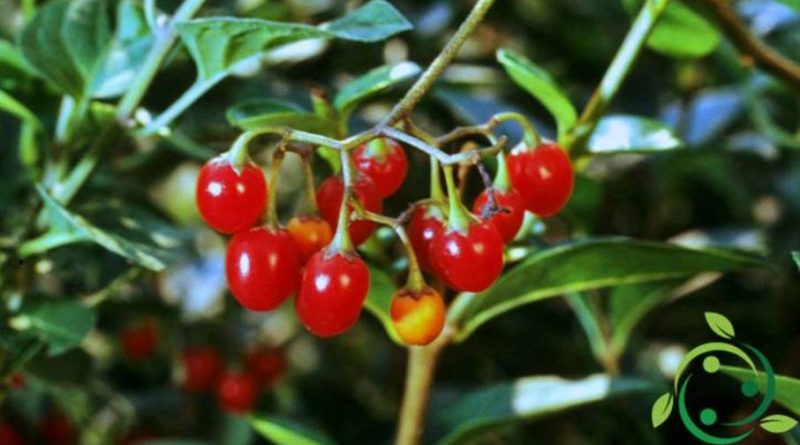Properties and cultivation of dulcamara
Properties and cultivation of dulcamara
The Dulcamara or climbing morella (Solanum dulcamara L., 1753) is a poisonous herbaceous species belonging to the Solanaceae family. The name is due to the presence of alkaloids, which give the twigs a taste, first bitter and then sweet, that the country boys used to chew like liquorice. The dulcamara, however, is a plant considered poisonous (especially berries), so it should be used by consulting a doctor and a nutritionist. It is not poisonous for birds that disperse the seeds so spreading it. In this sheet we will see properties and cultivation of the dulcamara and its possible uses but also the warnings and contraindications. In fact, although not one of the most poisonous species of our flora, the dulcamara is one of the most common causes of plant poisoning in children. The reasons are the diffusion of the plant, the charm of its beautiful colored fruits that resemble a little currant, and their sweet-bitter taste. Symptoms may also appear many hours after ingestion of the plant, and are characterized by abdominal pain, vomiting and, in severe cases, hypothermia and difficulty in breathing. However, cases of lethal poisoning are very rare.
The dulcamara is a bushy, climbing herbaceous species with many uses. The flowers are characterized by petals folded backwards, purple with a very pronounced yellow corolla. The flowers give off an unpleasant odor while the berries are oval and when they are fully ripe, in the late autumn period, they turn their color from green to red.
The Solanum dulcamara grows spontaneously in cool places, between hedges or bushes with peaty soil. It can thrive in damp woods and in shady uncultivated environments. The plant develops better in nutrient and moist soils, with a neutral pH reaction (the soil can be calcareous or siliceous).
It is a plant that, even if spontaneous, can be easily cultivated on all types of soil (in fact it is very common throughout Italy). It is more delicate towards decidedly maritime-windy climates. It prefers shaded positions with well drained soil but frequently moistened, and is easily reproduced by aquatic cuttings.
The dulcamara is also used in homeopathy.
The active ingredients contained in dulcamara, especially in berries and stems (or jambs), are characterized by the anti-inflammatory and anticholinergic activity that is the basis of the antiviral, antibacterial, haemolytic, anti-isothermal and local anesthetic properties. Thanks to the good amount of saponins, the dulcamara is considered a good expectorant.
However, since the dulcamara is a toxic plant, it is absolutely inadvisable to use it improperly and without medical consultation. Because of its toxicity, in internal uses, exclusive reference must be made to the remedies used in homeopathy: capsules, granules, drops, dosed infusions and tablets. For external use, you can use infusions and do-it-yourself decoctions but only for compresses.
Many parts of the plant, especially leaves and fruits, contain toxic glucoalkaloids (solanine, solacein and others) used in pharmacies; the plant also contains steroidal saponins and acids (dulcamaric and others). These if dissolved in a hydrolytic way produce sugar and solanidine. The most poisonous part, as mentioned, are the berries, especially when they are immature, which ingested, can cause vomiting, decreased breathing frequency and eventually even death by respiratory paralysis. Solanine in particular is a narcotic substance that affects the central nervous system. In phytotherapy we use young twigs (jambs), with diaphoretic properties (facilitates perspiration and promotes sweating), purifies the blood (facilitates the disposal of impurities), but also has a light hypnotic and anaphrodisiac actions. These properties are however balanced by the presence, to a much smaller extent, of the same toxic components found in berries.
This is why its consumption, if necessary, must be operated under strict medical supervision.

